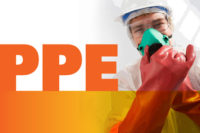Environmental Health and Safety (EHS) professionals are responsible for maintaining a high level of both safety and compliance within the organization. Each employee plays a part in meeting this goal, through individual tasks that work toward the end goal of ensuring a successful organization. EHS leaders who work on the front line are responsible for ensuring compliance while maintaining safety.
With that said, each employee has an individual responsibility to do their best to achieve a safe and diligent working environment. For the EHS industry, the ability to be proactive when it comes to managing incidents within the workplace plays a major role in the industry’s safety overall. Since most organizations must maintain compliance with regulatory agencies such as the Occupational Safety and Health Administration (OSHA), it is important that there are standard training techniques set in place as a consistent method for employees to follow.
The idea of teamwork in an organization is much like rowing a boat. If only one individual is obeying the instructions and performing while the others are slacking off, the boat is just going to go around in a circle. This is not conducive to the success of an organization and as the marketplace has become an ever-changing and demand driven field it can be difficult to keep ahead, while staying in compliance. That is why enterprise technology has become more prevalent in business today. In fact, it is rare to find a department within an organization that does not have a dedicated enterprise software solution set in place to provide control and support.
In the case of Environmental Health and Safety organizations the EHS Management System helps keep a company in control of safety initiatives and provides visibility into all activities.
What to Look for in an EHS Management System
When looking for an EHS Management system that is ideal for your organization, there is a lot to consider. There are many options, but it is important to pick a solution that is able to match your company’s unique way of doing business. The look and feel of a system, while it may seem like a fringe benefit, is important because this helps employees feel more comfortable with the system from the start, meaning there is little lapse in productivity due to a smaller learning curve.
Some capabilities to look for include:
Risk Management Integrated with Job Safety Analysis (JSA): Risk Management provides consistent, quantitative benchmarking for JSA by taking a proactive approach to the mitigation of job risks. JSA takes a job description and breaks it into individual steps. It then lists the potential hazards that could occur at each of those steps and implements controls for each step to prevent the hazard from occurring. This is where Risk Management can help.
Risk Management assesses the safety of each job step in the JSA. The JSA tool can look at the potential hazards in a job and assign a risk level to those hazards. Then through the use of controls and Personal Protective Equipment (PPE), an organization can begin to reduce the risk level of that job step. This method of reviewing job steps by risk, and mitigating those risks at a granular level, not only improves the safety of each step, but eventually improves the safety of the job overall.
Reporting: Through the reporting tool, an organization is able to regularly review processes and ensure that its safety initiatives are effective. Reporting enables this by showing trends in high levels of risk. Levels of risk can be seen in any location or department which is beneficial for trending events and data because they can be seen in real-time and add visibility into the system. For continual improvement, all incidents and accidents are able to be recorded and investigated so that the appropriate actions are taken to reduce the risk of recurrence. An EHS System’s reporting module should have the ability to generate safety reports that can automatically be submitted to regulatory agencies such as OSHA. These reports provide a strong component and focus strongly on improvement so that full functionality of the system is met.
Employee Training: Employee Training solutions permit your workforce to be as knowledgeable and as possible to handle job responsibilities. It prepares employees for adverse safety events, new policy changes, consistency on tasks and provides the ability to reduce errors overall. An automated training management system helps to keep employees apprised of changes to their responsibilities and ensures they remain up to date. This is done through managing and tracking events, linking documents to their respective requirements and enabling administrators to test employees at any time on new events or processes. Delivering tests and monitoring results through test recording allows management to ensure that their efforts have been worthwhile by showing that employees have received proper training through a pass or fail scoring method. Through an easily accessible storage hub, administrators can check an employee’s specific folder to see if they have demonstrated proficiency in their exams and if they have not, the system will allow administrators to schedule out a retest until training has been proven to be effective.
Conclusion
Safety is necessary in every aspect of an organization. In an effort to achieve a high level of compliance, safety must stem from each individual job function. EHS modules such as Risk Management, JSA and Employee Training are able to help identify associated hazards, analyze the risk and determine if a hazard is recurring. It is extremely important in an EHS organization to practice job safety. An EHS Management System enables your organization to manage safety effectively on a daily basis, and keeps you aware of what is happening behind the scenes so it can maintain a high level of safety across the enterprise as a whole.




